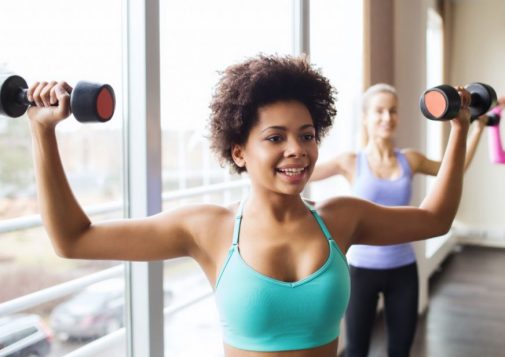Orthopod: Here’s how to avoid sabotaging your fitness resolutions

Many of us start the New Year with resolutions of fitness.
Holiday excess and desire for a firmer, fitter self result in steep increases in gym memberships. Despite these good intentions, many of us struggle with nagging orthopedic ailments that may be chronic or result from embarking on new exercise regimens.
As an orthopedic surgeon, a significant percentage of patients have nonsurgical orthopedic complaints. With correct assessment and an appropriate treatment program, a good number of these conditions can be eliminated, returning the patient to a pain-free state, able to work and to enjoy favorite leisure activities.
Exercise-related complaints are numerous, but some of the most common include painful knees, shoulders, ankles and muscle strains. Patients are often frustrated that they have injured themselves while trying to improve overall health with fitness pursuits.
Knee pain, particularly generalized, aching pain in the front of the knee, is not uncommon – the result of activities in the gym associated with lunges and squatting. Many of us, by the age of about 30, have developed some degree of degeneration of the cartilage between the patella, or knee cap, and the end of the femur.
Running on an incline or exercises that involve lunging or squatting or stair climbing, maximize the contact and pressure between the patella and femur, potentially aggravating degenerative changes by grinding the two surfaces together. While striving for stronger quads or improved cardiovascular fitness, the patient’s reward is an inflamed, painful knee.
I encourage my patients to consider what activities they may have started when their knee became a bother. They can often isolate the activity, and with modification, avoidance or cross-training, the pain resolves. I encourage them to use ice, anti-inflammatories or Tylenol and perhaps a knee brace that supports the patella until the inflammation resolves.
Weight training is an excellent way to tone and strengthen, but overuse or improper technique can damage the complex structures of the shoulder. I see this in patients attempting to do military presses or push-ups, when they break the natural plane of the shoulder with poor technique.
This is frequently the cause of anterior shoulder pain. Lifting too much weight or excessive reps can damage the rotator cuff – four tendons that provide stability to the shoulder and allow us to hold the arm away from the body in space.
I encourage patients to cross-train and suggest a formal session with a trainer, if possible, to make certain they are lifting with proper technique. Again, ice, anti-inflammatories or Tylenol and a period of rest can often resolve these issues, returning the patient to their fitness endeavors.
As one of my clinical subspecialties is disorders of the foot and ankle, I see a good percentage of patients who have developed heel and ankle pain with onset of frequent fitness activity. Plantar fasciitis, or inflammation of the tendon sheath running along the bottom of the foot, often occurs with new exercise pursuits that involve running or walking on an incline.
Tight Achilles tendons habitually pull on the fascia as patients work to increase their fitness, resulting in painful heels and a lingering limp. The back of the heel, where the Achilles tendon inserts, is often aggravated in similar fashion.
I recommend ice, anti-inflammatories and Tylenol in starting to resolve these problems. Silicone heel cups in the shoes can provide relief by slightly elevating the heel and reducing pull on the Achilles and plantar fascia. The hallmark of treatment is heel cord stretching – the traditional runner’s lunge. Patients are encouraged to stretch several times daily.
On the subject of stretching, the numerous muscle strains that present in the office could often be avoided with a more disciplined stretching regimen. While we struggle to make time to exercise given all the demands that compete for our time, stretching is an integral component of avoiding injury and helping to reach fitness goals.
Our soft tissue tends to become less flexible over time – a result of what I describe to my patients as “maturity.” Fifteen minutes of stretching or regular yoga sessions can help to keep soft tissue supple and to avoid damage that results from vigorous exercise when muscles and tendons are cold and tight.
Lastly, I cannot say enough about the benefits of cross-training. While we all have a favorite form of exercise, our bodies are not meant for the same fitness demands day in and day out. Rather, varying the demands on muscles as well as the muscles used can help to avoid overuse injuries and foster a healthy approach to fitness.
In my view, exercise is vital to both physical and mental health. I applaud New Year’s resolutions for greater fitness, as it definitely has positive effects on orthopedic and overall health.
Best wishes for a healthy, happy, fitness-filled New Year – free of orthopedic pain.
Dr. Gregory G. Caronis is a board-certified Lake County orthopedic surgeon with Advocate Medical Group Orthopedics at Advocate Condell Medical Center. A specialist in disorders of the foot and ankle and fracture care, Dr. Caronis also practices general orthopedics and sees patients in Libertyville and Gurnee. For orthopedic questions, contact drgregcaronis@gmail.com or make an appointment here.
Related Posts
Comments
About the Author
Gregory Caronis, M.D., MBA is Chairman of Surgery at Advocate Condell Medical Center and a board-certified orthopedic surgeon with Advocate Medical Group Orthopedics. A specialist in disorders of the foot. ankle and fracture/orthopedic trauma care, Dr. Caronis also practices general orthopedics. He sees patients in Libertyville and Gurnee – to schedule an appointment call AMG Orthopedics at (847) 634-1766.

















